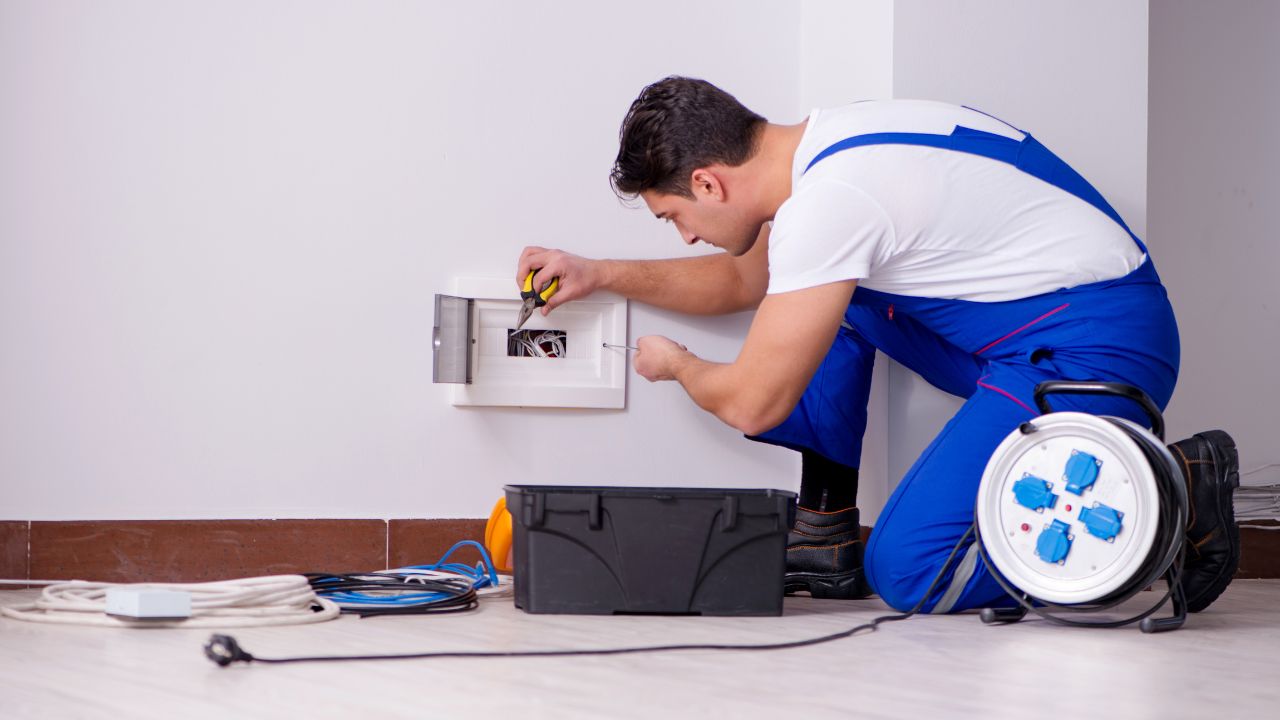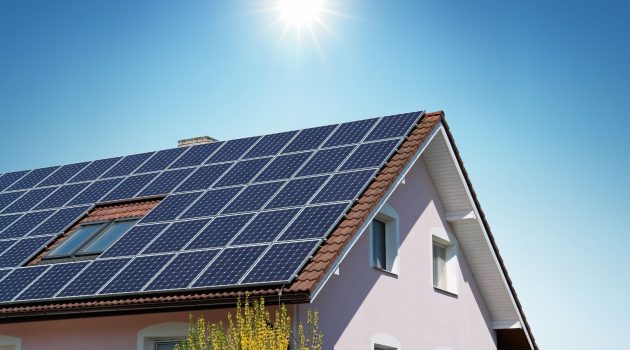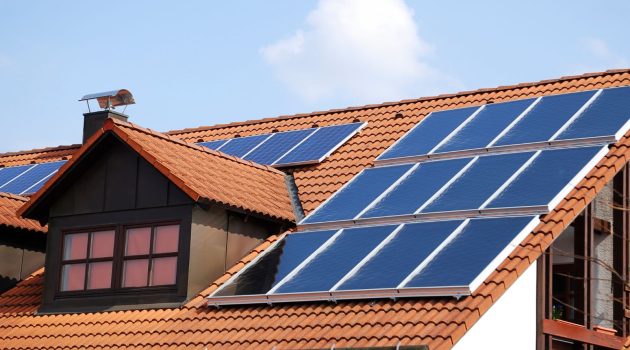Electricity is a marvel that has revolutionized our lives, making everyday tasks more convenient and efficient. However, it’s essential to remember that it comes with risks if not managed properly.
In this article, we will explore 20 home electrical safety tips to ensure you and your loved ones can safely enjoy all the benefits of electricity.
Your home is a sanctuary where you can relax and create special memories with your family. To create a safe environment, staying informed about proper electrical safety practices is crucial.
From simple tasks like charging your devices to more complex chores such as using electrical equipment, we’ll guide you through various ways to implement safety measures throughout your home.
These tips are designed with your well-being in mind, ensuring you can confidently maintain a secure home environment.
Following these practices can minimize potential hazards, making your home a safe haven for you and your family.
Get ready to learn valuable information that can keep you and your loved ones safe from electrical dangers.
A. Understanding Your Home Electrical System
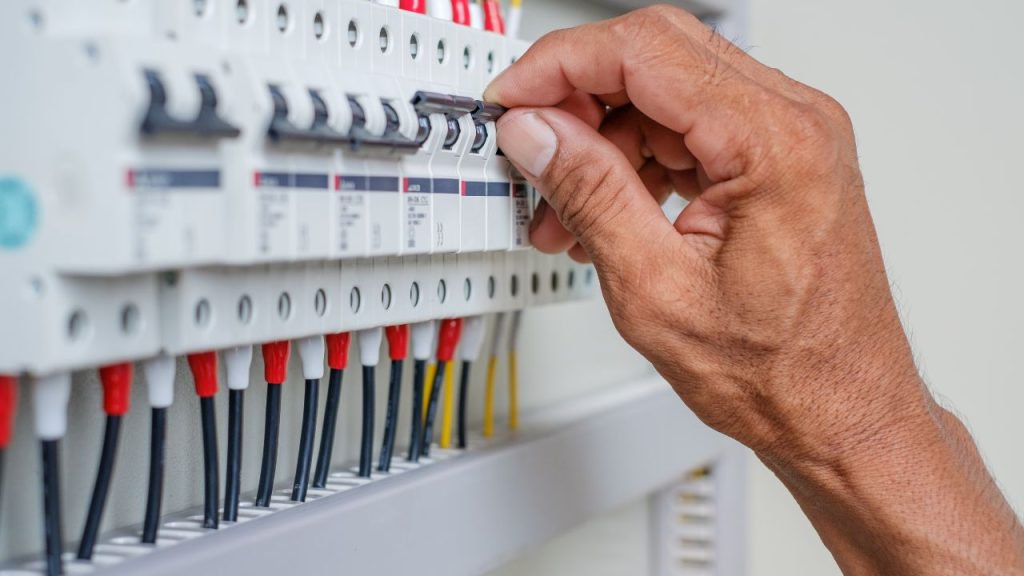
Your home’s electrical system is a complex network that powers all your devices and appliances.
Understanding the basics of your home’s electrical system is essential to ensure safe operation and prevent potential hazards.
1. Main Shutoff Switch
The main shutoff switch is an important safety feature in your home’s electrical system. It allows you to disconnect power to the entire house in case of an emergency or when performing maintenance.
This switch is typically located near your electric meter, outside your home or in a utility room. Switch the main breaker to the “Off” position to shut off power.
Remember, turning off the main shutoff switch can prevent shock and other injuries when you need to perform electrical work or in emergencies.
2. Circuit Breakers
Circuit breakers are key components in your home’s electrical system, designed to protect your appliances and prevent electrical fires.
They work by automatically shutting off power to a circuit when an overload or short circuit occurs. Your home’s breaker or service panel is usually in a utility room or garage.
It’s essential to familiarize yourself with your breaker panel to handle any electrical issues that may arise. Each breaker should be appropriately labeled, indicating the rooms or appliances it controls.
If a circuit breaker trips, first unplug any devices that may have caused the issue and then reset the breaker by switching it to the “Off” position and back to the “On” position.
Knowing your circuit breakers can help you quickly address electrical problems and maintain a safe home environment.
3. Grounding
Grounding is an essential safety feature in your home’s electrical system.
It creates a direct path for excess electrical current to flow safely into the ground in case of a short circuit or other electrical issue, helping to prevent electrical shocks and fires.
Your home’s electrical system should be properly grounded, with a grounding electrode typically located near the service panel.
To ensure your appliances and devices are grounded, use three-pronged plugs, and make sure your outlets are grounded by checking for the round third hole (ground slot).
If your home has older two-pronged outlets, it’s a good idea to consult a certified electrician to upgrade them to grounded, three-pronged outlets.
Proper grounding is crucial for your safety and the safe operation of your electrical devices.
B. Preventing Electrical Overloads
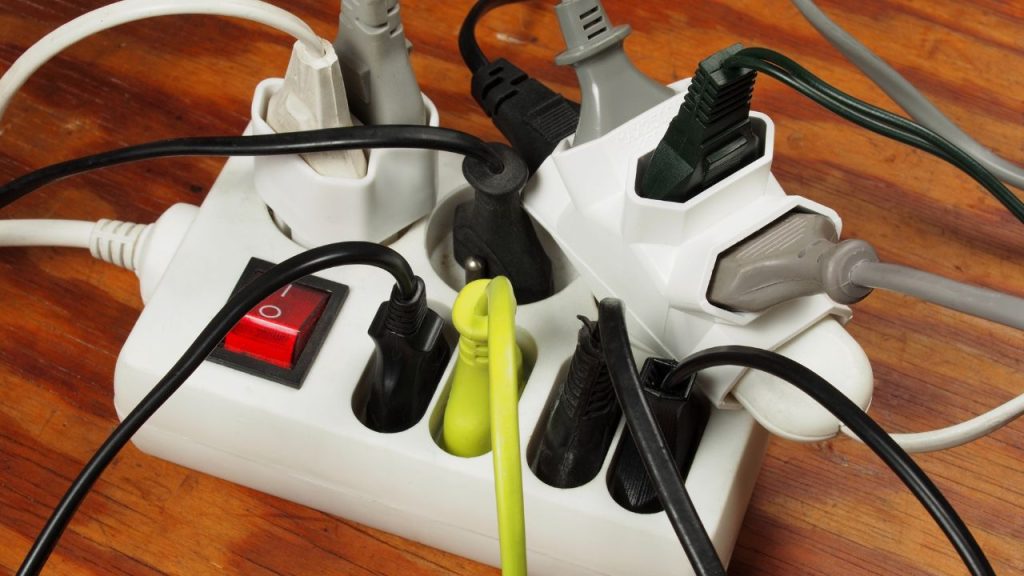
1. Avoid Overusing Extension Cords
It’s essential to be cautious when using extension cords. Overusing them can lead to electrical overloads, which may cause fires.
Follow these friendly tips:
- Limit extension cord usage: Use extension cords only when necessary, and unplug them when not in use.
- One appliance per extension cord: Connect only one high-wattage appliance to an extension cord to avoid overloading.
- Don’t daisy-chain: Avoid connecting multiple extension cords together, as this can generate an overload.
2. Use Correct Wattage Bulbs
Using the right wattage bulbs is crucial in maintaining electrical safety. Here are some suggestions to follow:
- Check the fixture rating: Before installing a light bulb, be sure to check the fixture’s maximum wattage rating. Never exceed this limit.
- Opt for energy-efficient bulbs: Consider replacing traditional incandescent bulbs with energy-efficient options, such as LEDs or CFLs. They consume less power and generate less heat, reducing the risk of overloading.
Remember, preventing electrical overloads is key to maintaining a safe home environment. Keep these tips in mind, and always be cautious when using electrical devices.
C. Keeping Children Safe
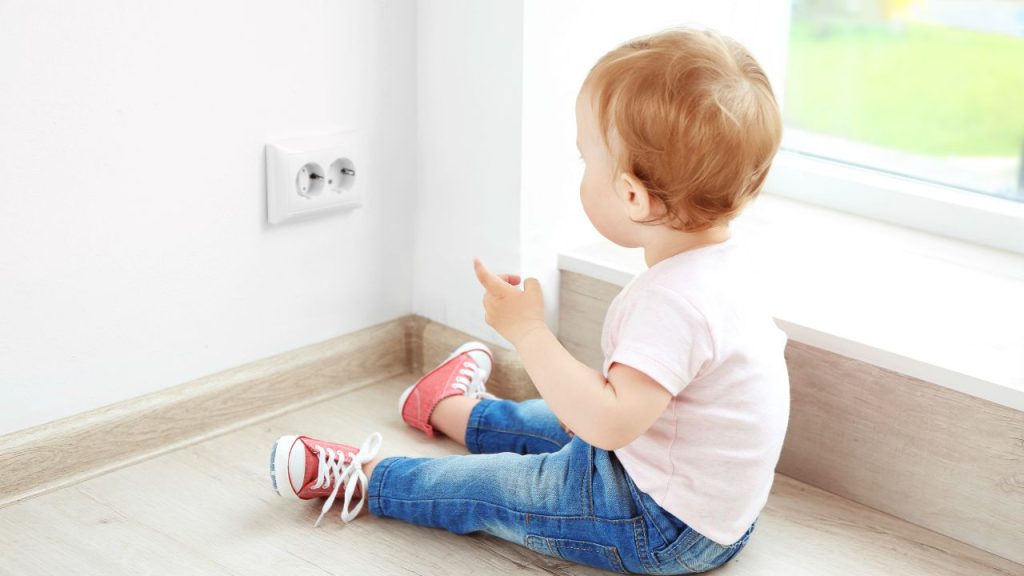
As a parent or caretaker, it’s crucial to prioritize electrical safety for children in your home.
By following these quick tips, you can ensure a safe environment for your little ones.
1. Outlet Covers
One of the first steps you can take to protect your children is installing outlet covers.
Children are naturally curious and may try to insert objects into electrical outlets, which can lead to shocks or burns.
- Use safety plugs or caps on all unused outlets in your home. This will prevent your child from being able to stick their finger or a toy into the holes.
- When you can, place furniture in front of outlets to block access, especially if your child is persistent in trying to reach them.
- Keep electrical cords out of reach and sight to prevent any temptation to play with them.
2. Childproof Appliances
Electric appliances can pose a significant risk to children if not properly secured. Follow these guidelines to keep your kids safe around appliances:
- Store electrical appliances and devices out of reach of young children. This includes kitchen appliances, hairdryers, and electronic gadgets.
- Educate kids about electrical safety and discourage them from playing with or around electrical devices.
- Avoid plugging in phones or other electronic devices in bathrooms or near water sources, as this can pose an electrocution risk.
- Use tamper-resistant receptacles for added protection against electrical accidents.
By following these simple tips, you’ll be well on your way to creating a safe environment for your children to explore and enjoy.
Always remember to be vigilant and keep an eye on your little ones as they learn about their surroundings.
Read also:
- Smart Air Conditioners: How are They Better Than Traditional Ones?
- 10 Best RV Dehumidifiers: Top Picks for 2023
- 20 Coffee Station Ideas to Make Caffeine Addicts Happy
D. Electrical Maintenance Tips
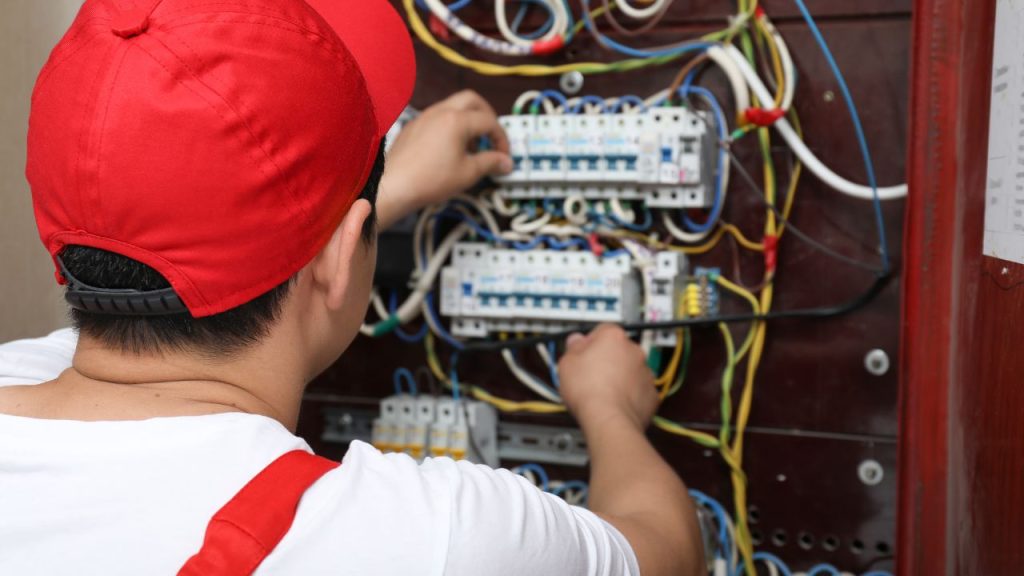
Regular electrical maintenance is important to ensure the safety of your home.
We’ll cover a few essential tasks, including testing and replacing smoke detectors, inspecting cords and plugs, and checking your circuit breaker.
1. Testing and Replacing Smoke Detectors
Smoke detectors are essential for protecting your family from fires. To keep them in good working order, follow these steps:
- Test monthly: Press the test button on your smoke detector to make sure it’s functioning properly.
- Replace batteries annually: Change the batteries in your smoke detectors at least once a year, or whenever the low-battery alarm sounds.
- Replace units every 10 years: Smoke detectors have a limited lifespan, so make sure to replace the entire unit every decade.
2. Inspecting Cords and Plugs
Damaged or frayed cords and plugs can lead to electrical hazards. To ensure their safety, follow these steps:
- Regularly check for damage: Inspect your cords and plugs regularly for signs of wear, such as fraying or exposed wires.
- Replace damaged cords: If you find any damage, replace the cord immediately to prevent electrical fires or shock.
- Don’t overload outlets: Avoid plugging too many devices into one outlet, which can generate excess heat and result in a fire.
3. Routine Circuit Breaker Check
Your circuit breaker is responsible for preventing overloads in your electrical system. It’s important to keep it in good working order by following these steps:
- Label circuits: Clearly label each circuit in your breaker panel, so you know which switches control what areas of your home.
- Check for tripped breakers: Regularly check your panel for tripped breakers, and reset them to restore power to the affected areas.
- Know the signs of a problem: Be aware of the signs of trouble with your circuit breaker, such as frequent tripping or hot-to-touch switches. If you notice any issues, consult a professional electrician for an inspection.
By following these electrical maintenance tips, you’re taking important steps to protect your home and ensure the safety of your family.
E. Handling Electrical Appliances with Care
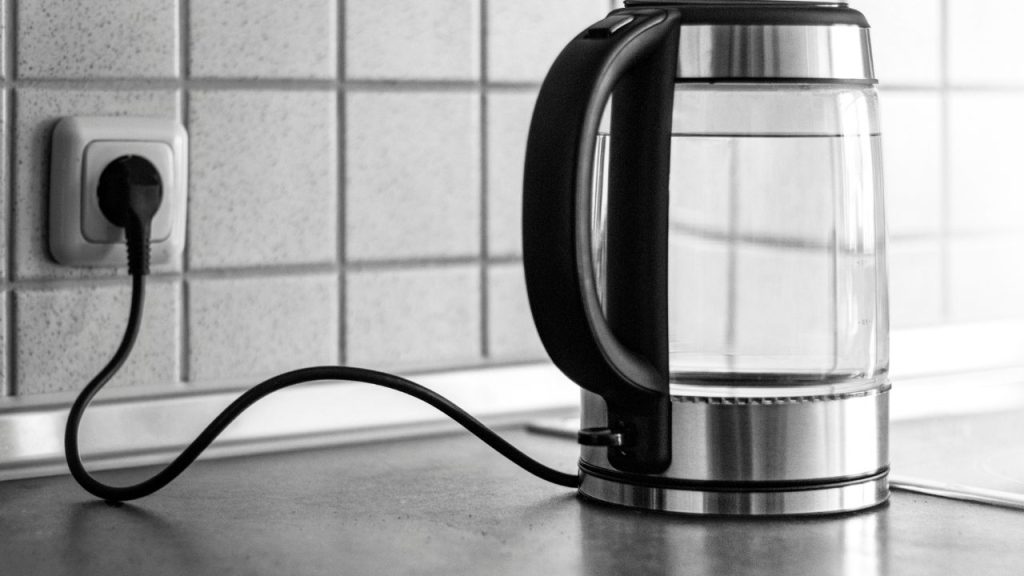
1. Unplugging by the Plug
When using electrical appliances, always unplug them by holding the plug, not by yanking on the cord.
Pulling on the cord can cause it to fray or become loose, increasing the risk of electrical shock or fire.
Consider replacing the appliance or consulting a professional if the cord is already damaged. Remember, safety comes first.
2. Keeping Appliances Dry
It’s important to keep electrical appliances away from water and other liquids.
Ensure your hands are dry before touching electrical appliances, and avoid using them near sinks, bathtubs, or other water sources.
If an appliance accidentally comes into contact with water or gets wet, unplug it immediately and allow it to dry completely before using it again.
If you need clarification on whether it’s safe to use after getting wet, consult a professional for advice.
Here are some additional tips for handling electrical appliances with care:
- Regularly clean appliances according to the manufacturer’s instructions to prevent dust and debris from accumulating, which can pose a fire hazard.
- Use appliances only for their intended purpose and always follow the manufacturer’s guidelines.
- Keep electrical cords and wires away from heat sources, such as radiators or stoves, to prevent melting or damage.
- Avoid overloading electrical outlets, as this can lead to overheating and potentially cause a fire.
F. Outdoor Electrical Safety
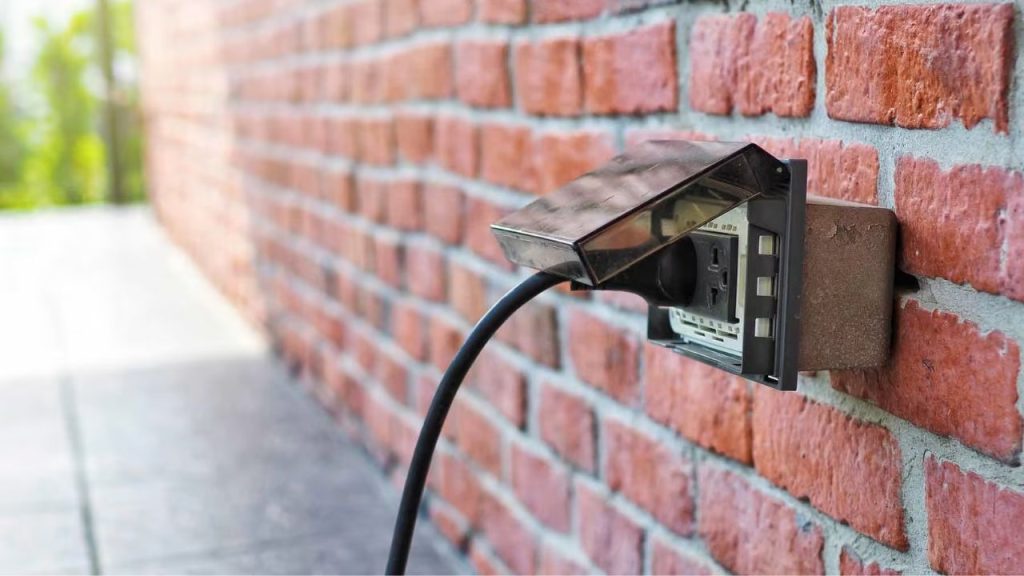
1. Using Outdoor-rated Cords and Devices
When working outdoors, it’s essential to use electrical equipment and extension cords specifically designed for outdoor use.
Outdoor-rated cords and devices have additional safety features and are made from materials that can withstand moisture, temperature changes, and sun exposure.
Always check for the label or packaging markings that indicate the equipment is suitable for outdoor use.
Additionally, remember to protect yourself. Safety devices in the yard and other outdoor electric tools are there for a reason. Please make sure they are always in place before operating.
Invest in safety goggles, hearing protection, dust masks, gloves, and other safety equipment as recommended for each tool.
Wear appropriate clothes for the job to stay safe while engaging in outdoor electrical projects.
2. Safe Power Line Distance
Being aware of power lines while working outdoors is crucial in ensuring your safety. Maintain a safe distance from overhead power lines when using ladders, trimmers, or other tall equipment.
A minimum of 10 feet is recommended, but in some cases, more distance may be necessary.
Before any digging on your property, call 811 or your local “Before You Dig” service. They will mark where your underground utilities are located, helping you avoid potential hazards.
This service is typically free and prevents dangerous accidents involving buried utilities.
Finally, in case of any electrical issues or equipment damage while working outdoors, it’s always a good idea to have a professional electrician examine and perform repairs if necessary.
It’s better to be cautious than to take risks when it comes to electrical safety. So, follow these tips and create a safe environment for all outdoor electrical projects.
G. Preparing for an Electrical Emergency
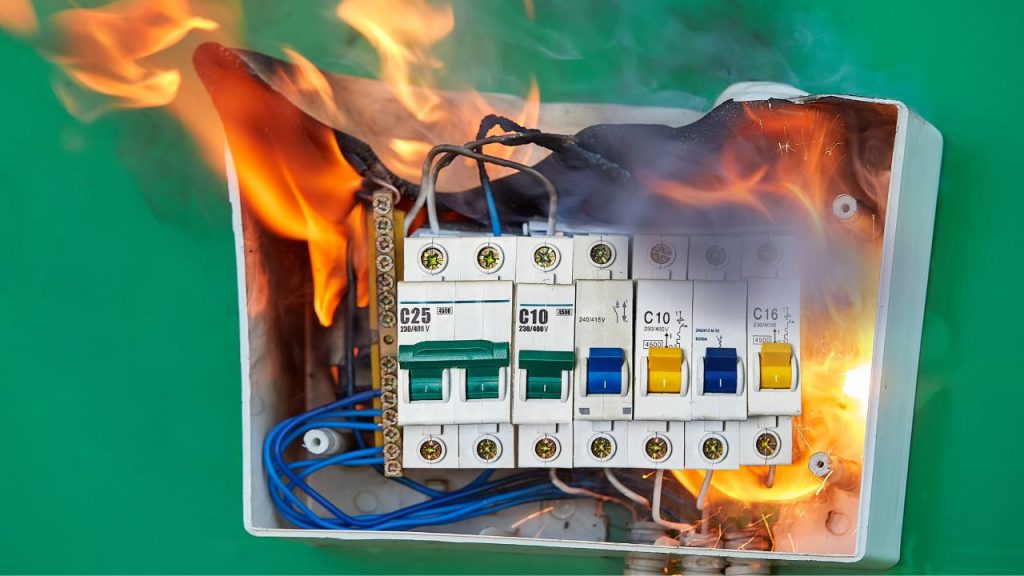
1. Have a Fire Extinguisher
Having a fire extinguisher in your home is important to quickly put out any small electrical fires before they can spread.
Keep a fire extinguisher in areas where electrical equipment is frequently used, such as the kitchen, living room, or garage. Make sure to:
- Choose the right type of fire extinguisher: For electrical fires, you will need a Class C fire extinguisher.
- Learn how to use the extinguisher: Familiarize yourself with the PASS method (Pull the pin, Aim it low, Squeeze the handle, and Sweep side-to-side).
- Regularly inspect the fire extinguisher: Check for expiration dates and ensure it remains in working order.
2. Know How to Turn Off the Main Shutoff Switch
Understanding how to locate and turn off your home’s main electrical shutoff switch is essential in an electrical emergency.
This knowledge can help prevent damage, electrical fires, and potential electrocution.
Follow these steps to locate and use your main shutoff switch:
- Find the electrical panel: It is usually located in the basement, garage, or utility room of your home.
- Locate the main breaker or switch: It will likely be the largest breaker in the panel, often labeled as “Main” or “Main Breaker.”
- Turn off the power: To shut off the electricity, switch the main breaker to the “Off” position. This will disconnect the power supply to your entire home.
In an electrical emergency, remember to remain calm and act quickly by using a fire extinguisher and knowing how to turn off the main shutoff switch.
By following these guidelines, you can contribute to a safer environment and respond effectively in an electrical emergency.
H. Know When to Call a Professional Electrician
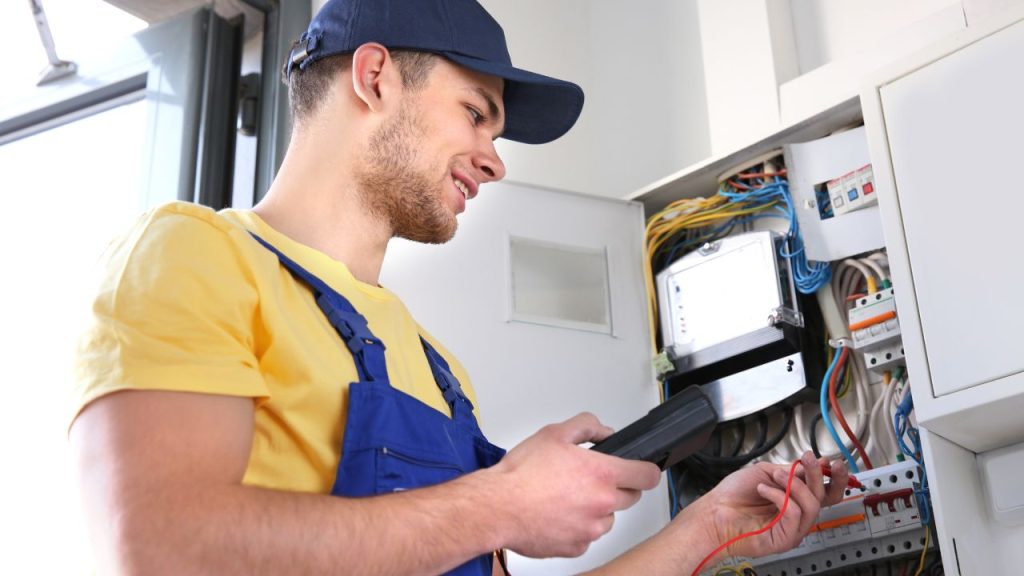
Trying to fix an electrical problem yourself can be challenging and even dangerous. It’s essential to know when to call a professional electrician to ensure your safety and the well-being of your home.
Here are a few situations when it’s best to consult with an expert:
1. Frequent tripping breakers
If your circuit breaker trips often, it’s a sign of an issue with overloaded circuits. Your circuit breaker is designed to protect your home from electrical fires by switching off before overheating.
Don’t hesitate to call a professional electrician if you experience this issue, as it may indicate a more significant problem.
2. Flickering or dimming lights
If you notice your lights flickering or dimming often, it could be because of an overload on the circuit or an issue with the wiring.
A competent electrician will be able to identify the cause and provide the necessary repairs to ensure your home’s electrical safety.
3. Burning smell or sparks
A burning smell or sparks are telltale signs of serious electrical problems. Unaddressed, these could lead to electrical fires or damage to your appliances.
Immediately switch off the power, unplug the affected devices, and contact a professional electrician.
4. Outdated electrical systems
If your home has an older electrical system, it may need to be equipped to handle the energy demands of modern appliances and technology.
An electrician can assess your current setup and recommend upgrades or repairs to keep your system current.
Remember, your safety should be your top priority. When faced with electrical issues, it’s always better to avoid caution and call a professional electrician to help.
They have the necessary knowledge, experience, and tools to ensure your home stays electrically safe.
Frequently Asked Questions
What are some common precautions for home electrical safety?
To ensure home electrical safety, always follow appliance instructions and avoid overloading outlets. Regularly check for warm light switches, sparking outlets, or unusual smells around electrical units. Also, ensure appropriate wattage for lamps and lighting is used.
How can we prevent electrical hazards at home?
You can prevent electrical hazards by unplugging appliances when not in use, installing GFCI outlets in high-risk areas (like kitchens and bathrooms), and scheduling regular electrical inspections. Additionally, keep an eye out for signs of pest damage to wires and replace any damaged cords or plugs.
What measures can I take to ensure electrical safety at school or work?
At school or work, ensure that all electrical equipment has been inspected and approved for use. Follow safe work practices, like unplugging equipment before cleaning or repairing it. Avoid overloading outlets and use the proper extension cords rated for the intended load.
How to stay safe near electrical appliances at home?
To stay safe near home electrical appliances, keep a safe distance from them when wet, avoid using damaged appliances, and never insert any objects into the appliance openings. Also, ensure appliances are properly grounded and use childproof covers to protect children from electrical hazards.
Why is electrical safety important at home?
Electrical safety is essential at home as it helps prevent accidents, fires, and costly damage. By following proper safety measures, you can protect yourself and your family from harm, ensuring a safe and comfortable living environment.
